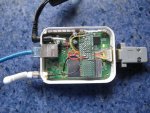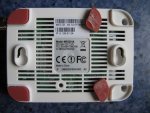Hi, bit of a first timer with all this but i'm hoping that someone can offer me some advice and or tell me i'm wasting my time.
I'm currently designing a device that will be able to access my home router, what i would like to know is if i can do this with an xBee wireless module (it transmits and recieves at 2.4Ghz and conforms to the 802.15.4 protocol) and then the information is used by the picaxe (a pic18f4423) to send to an LCD.
I need to know if the xBee will work, or if a 433 can connect to a router or if there is anything that will help and might work.
thanks
Dave K
I'm currently designing a device that will be able to access my home router, what i would like to know is if i can do this with an xBee wireless module (it transmits and recieves at 2.4Ghz and conforms to the 802.15.4 protocol) and then the information is used by the picaxe (a pic18f4423) to send to an LCD.
I need to know if the xBee will work, or if a 433 can connect to a router or if there is anything that will help and might work.
thanks
Dave K


